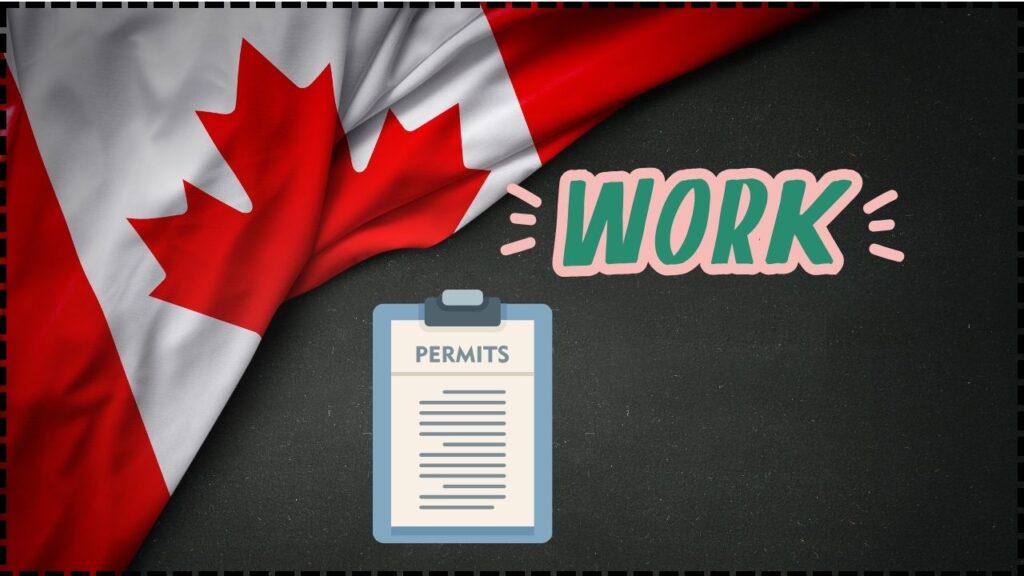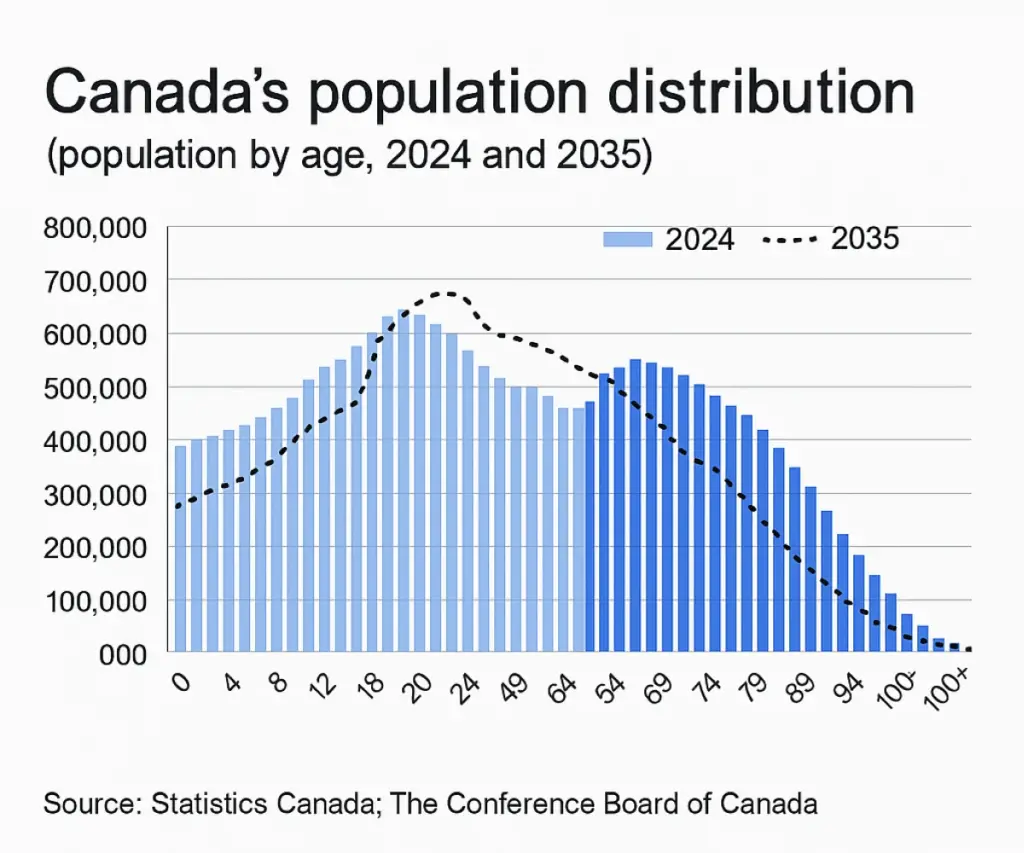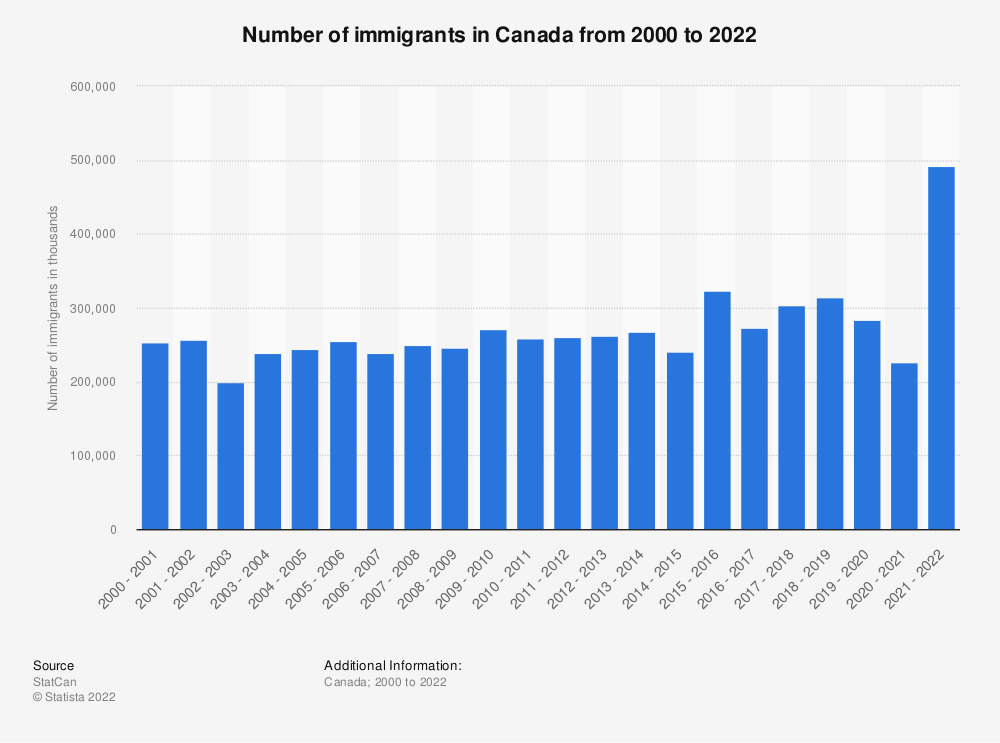
Canada’s 2025 Work Permit Rules Change Everything: When it comes to moving abroad for work, Canada has always been a top destination for Americans and people worldwide. The dream of maple syrup, hockey games, and polite neighbors is appealing, but let’s be real—the paperwork? Not so much. That’s why the headline news around Canada’s 2025 work permit rules has so many people talking. Here’s the deal: For 2025, you don’t always need a job offer to secure a Canadian work permit. Yes, you read that right. This is a game-changer for students, skilled professionals, and families considering the move up north. But the rules are more complex than social media soundbites make them seem, so let’s break it down in plain English.
Canada’s 2025 Work Permit Rules Change Everything
The Canada 2025 work permit changes are a mix of opportunity and challenge. For some, the “no job offer, no problem” pathway remains open through work permits. For others, particularly spouses and families, stricter eligibility rules mean more hurdles. Still, Canada remains one of the most accessible and attractive destinations for skilled workers, students, and young professionals. With careful planning and an eye on official updates, you can turn these new rules into opportunities instead of obstacles.
| Policy Area | 2025 Update | Stats/Details | Official Source |
|---|---|---|---|
| Open Work Permits (OWPs) | Still don’t require a job offer or LMIA | Available for certain categories (students, spouses, workers in transition) | Canada.ca |
| Family OWPs | Stricter eligibility since Jan 21, 2025 | Only spouses of grad-level students or high-demand workers qualify; dependents excluded | IRCC |
| Job Mobility | Easier to switch jobs (May 27, 2025) | Workers can start new roles while waiting for approval | Economic Times |
| IEC Applicants | Don’t need to leave Canada to receive permits (May–Dec 2025) | Permits mailed directly | CIC News |
| Processing Delays | Big increase in LMIA-related delays | Jumped from 58 to 165 business days in 2025 | Reuters |
| Permanent Residency Pathways | New route through EMPP in 2025 | Targets displaced skilled workers and refugees | IRCC EMPP |
Why the Big Buzz Around Canada’s 2025 Work Permit Rules?
Think of it this way: In the past, moving to Canada for work usually meant two headaches—landing a job offer and getting your employer to go through the Labor Market Impact Assessment (LMIA). That process often dragged on longer than binge-watching all of “The Office” reruns on Netflix.
Now, with open work permits (OWPs) still not requiring job offers, the barriers are lower for certain applicants. This makes Canada more accessible for folks who are qualified and ready to contribute, but don’t yet have an employer lined up.
Why Is Canada Changing the Rules?
To understand these changes, it helps to look at the bigger picture. Canada admitted over 2.5 million temporary residents in 2024, including international students, foreign workers, and asylum seekers. That’s a record high.
At the same time, housing prices in cities like Toronto and Vancouver reached all-time highs, rental costs doubled in smaller provinces, and the healthcare system faced staffing shortages. Local governments started pushing Ottawa to better balance population growth with infrastructure.
In response, the federal government decided to tighten some pathways—particularly spousal permits and dependent eligibility—while still keeping doors open for skilled professionals and graduates. It’s a balancing act: welcoming talent while protecting housing and jobs for Canadians.
Breaking Down the Canada’s 2025 Work Permit Rules Change Everything
1. Open Work Permits (Still No Job Offer Required)
Open Work Permits remain one of the easiest ways to get into Canada’s workforce. These permits let you work for almost any employer, without needing that dreaded LMIA.
Who qualifies?
- Recent graduates from Canadian institutions under post-graduation work permit programs.
- Spouses or partners of skilled workers and students (with new restrictions).
- Certain international residents under humanitarian or reciprocal programs.
For Americans, the appeal here is strong—no need to lock in a Canadian employer before moving.
2. Stricter Family Rules (Effective January 21, 2025)
Before 2025, spouses of international students at nearly any level could get an open work permit. But now the rules are much narrower.
- Spouses of students: Only spouses of master’s, PhD, or certain professional program students can qualify.
- Spouses of workers: Eligibility depends on the worker being in TEER 0 or TEER 1 jobs, or select TEER 2–3 occupations like healthcare and trades.
- Dependent children: No longer eligible for open work permits under this rule.
Example: Mark, an American whose wife studies a bachelor’s program in Toronto, would no longer be eligible for a spousal work permit in 2025. But if his wife were pursuing a PhD, he’d qualify.
3. Job Mobility Gets Easier (May 27, 2025 Update)
Another major update: Foreign workers with employer-specific permits can now switch jobs while waiting for new permits.
Why is this important? Because LMIA processing times have exploded, going from 58 business days in 2022 to 165 days in 2025. Without this flexibility, workers risked being stuck in toxic jobs or falling out of status.
Now, you can start your new role while the application is in the system, giving much-needed freedom to workers in industries like hospitality, trucking, and IT.
4. International Experience Canada (IEC) Perks
The IEC program lets young people (usually under 35) live and work in Canada temporarily. In 2025, there’s a major perk:
Between May 6 and December 1, 2025, IEC applicants already in Canada won’t have to leave the country to get their permits. Instead, documents are mailed directly to their Canadian address.
Imagine you’re a 25-year-old from Texas who came to Canada for a ski resort job in Banff. In past years, you might’ve needed to fly home just for paperwork. Now, you can stay on the mountain while your work permit shows up in your mailbox.
5. Permanent Residency Pathways Expand
Temporary workers often want to stay permanently. That’s where the Economic Mobility Pathways Pilot (EMPP) comes in.
This new 2025 pathway is aimed at skilled workers and displaced people, including refugees, who can contribute to Canada’s economy. It creates a bridge between humanitarian immigration and economic migration, a first of its kind globally.
For example, a Syrian nurse working in Germany who qualifies under EMPP could get a fast-track permanent residency in Canada.

What About Americans? Special Pathways to Know
For U.S. citizens, there are additional advantages.
- CUSMA (formerly NAFTA) Professionals: Certain occupations—like engineers, accountants, and IT consultants—qualify for work permits without LMIA. Americans can apply at the border and start working almost immediately.
- Border Applications: Many Americans can skip online applications and apply directly at Canadian ports of entry.
- Cross-Border Flexibility: Frequent travelers, such as truck drivers or consultants, often benefit from simplified processes.
For Americans, the message is clear: If you’re in the right profession, Canada’s system is far less of a hassle compared to applicants from other countries.
“No One’s Picking Up!”: Canadians Furious as CRA Phone Lines Go Silent
Costly Mistake: CRA Penalizes Taxpayer for Not Reporting Home Sale
Outrage Erupts as Federal Union Slams Cuts to CRA Call Centres
Practical Advice: How to Navigate These Changes
Step 1: Identify Your Category
Check if you’re a student, skilled worker, spouse, or IEC applicant. Each group has unique requirements.
Step 2: Plan for Delays
Processing times are long. If an LMIA is required, plan for six months or more. Don’t quit your U.S. job until you know your timeline.
Step 3: Explore PR Options
Look into permanent residency programs like Express Entry or the EMPP. Many temporary residents eventually transition to PR.
Step 4: Keep Updated
Immigration rules can change quickly.
Step 5: Seek Professional Help if Needed
Immigration consultants and lawyers can help navigate tricky categories, especially for families or specialized professions.











